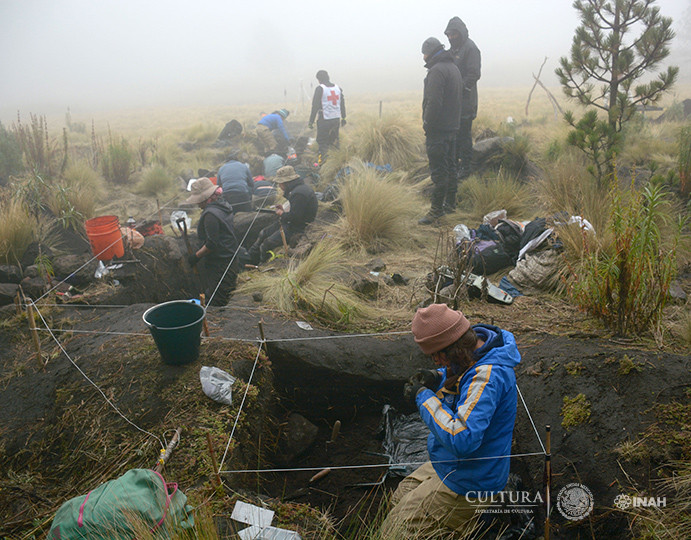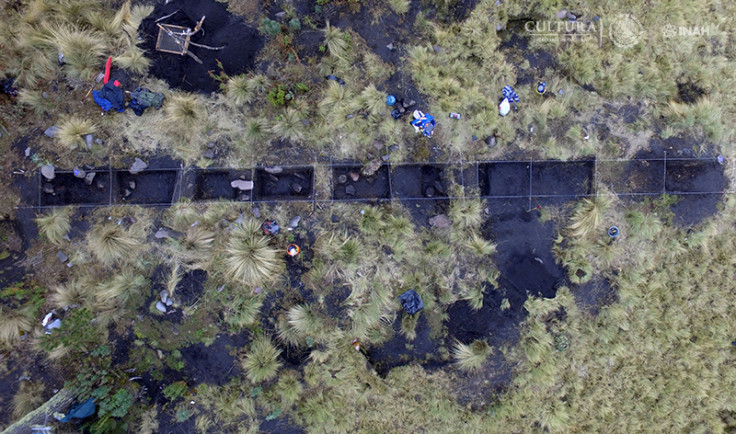Depiction of mythical Aztec universe discovered in natural pond near Mexico's Iztaccihuatl volcano
The mirror effect of the pond gives the underwater stone shrine a 'floating' effect.

A team of archaeologists in Mexico have discovered a stone shrine in a pond that depicts the design of the universe, as imagined by ancient Aztec civilisations. The stone "tetzacualco" or sanctuary was found at Nahualac, a site at the foothills of the Iztaccihuatl volcano.
According to the National Institute of Anthropology and History (INAH), along with the stone shrine, ceramic fragments, lithic materials, lapidaries and organic remains were found nearby, which have been associated with the Aztec rain god Tlaloc.

The researchers have surmised that the placement of the stones is meant to portray a miniature model of the mythical universe. The placement itself creates the effect of making it seem like the stones are 'floating' on the water's surface rather than lying on the pond bed.
"The existence of a tetzacualco (shrine) in the middle of a natural pond and the optical effect that occurs when the water mirrors, from which it seems that the structure emanates, suggests that the place is the representation of a primeval time and space, a miniature model of the universe," the team opined, according to the Daily Mail.
Archaeologist Iris del Rocio Hernandez Bautista, who is from the Subaquatic Archeology Subdirectorate (SAS) of the INAH, pointed out that according to Mesoamerican creation myths, the world was devoid of any land. Cipactli (the monster of the earth) floated on the primitive waters and from his body, the sky and the earth were created.
She believes there was a ritualised control of the water coming from nearby springs to irrigate the pond with the aim of causing a visual effect in which it seemed that the structure and the mounds of stone floated on the water mirror, which in turn reflected the surrounding passage.

"These visual effects, in addition to the characteristics of the elements that make up the site and the relationship they have with each other, make us suppose that Nahualac could represent a microcosm that evokes the primitive waters and the beginning of the mythical time-space," she said.
The Nahualac site is divided into two sections — the first being the pond and the tetzacualco, and the second is located 150 metres southeast of the structure, over a wide valley which has a number of natural springs. Ceramic pieces with decorative elements associated with Tlaloc have been found here.
"In this area, ceramic materials were identified on the surface, some of them identified as Coyotlatelco (750-900 AD), Mazapa (850 to 900 AD) and Tollan Complex (900-1150 AD). Altogether, the archaeological evidences cover an approximate area of 300 by 100 metres," Bautista added.























